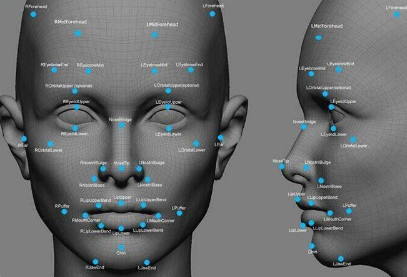Research on Key Issues of Face Recognition
a) Illumination problems in face recognition
Illumination change is the most critical factor affecting the performance of face recognition. The degree of solving this problem is related to the success or failure of the practical process of face recognition. The research idea is to consider the possibility of quantitative research on it based on systematic analysis, including the quantification of light intensity and direction, the quantification of face reflection attributes, facial shadow and illuminance analysis, and so on. On this basis, consider establishing mathematical models that describe these factors, so as to use these illumination models to compensate as much as possible and even eliminate their impact on recognition performance in the preprocessing or normalization stage of the face image. The focus is on how to separate the inherent face attributes (reflectivity attributes, 3D surface shape attributes) and non-face inherent attributes such as light source, occlusion, and highlights from face images. Reflectance attribute estimation based on statistical vision model, 3D surface shape estimation, illumination pattern estimation, and arbitrary illumination image generation algorithm are the main research contents at present.

Consider two different solutions:
Use the illumination mode parameter space to estimate the illumination mode, and then perform targeted illumination compensation to eliminate the effects of shadows and highlights caused by uneven frontal illumination;
An arbitrary lighting image generation algorithm based on the lighting subspace model is used to generate multiple training samples with different lighting conditions, and then use face recognition algorithms with good learning capabilities, such as subspace method, SVM and other methods for recognition.
b) Research on the pose problem in face recognition
The pose problem involves the face changes caused by the rotation of the head around three axes in a three-dimensional vertical coordinate system, where the depth rotation in two directions perpendicular to the image plane will cause partial loss of facial information. Make the pose problem a technical problem in face recognition.
There are three ways to solve the posture problem:
Learning and memorizing a variety of gesture features is more practical for situations where multi-pose face data can be easily obtained. Its advantage is that the algorithm is unified with frontal face recognition and does not require additional technical support. Its disadvantage is that the storage requirements are large and the gestures are extensive. The transformation ability cannot be determined, and it cannot be used for face recognition algorithms based on single photos.
Generate multi-angle views based on a single view, which can synthesize multiple learning samples of the user when only a single photo of the user can be obtained, which can solve the problem of multi-posture face recognition in the case of fewer training samples, thereby improving recognition performance.
The method based on posture invariant features is to find those features that do not change with posture changes. The idea of ​​the Institute of Computing Technology of the Chinese Academy of Sciences is to use a statistical-based visual model to correct the input posture image into a frontal image, so that feature extraction and matching can be performed in a unified posture space.
Finally, the multi-pose view generation algorithm based on the single-pose view will be the core algorithm to be studied next. The current basic idea is to use machine learning algorithms to learn the 2D change mode of the posture, and use the 3D model of the general face as prior knowledge. Compensate the invisible part of the 2D pose transformation and apply it to the new input image.
Some additional points:
Camera image problem
Many technical parameters of the camera affect the quality of the video image. These factors include the photoreceptor (CCD, CMOS), the size of the photoreceptor, the processing speed of the DSP, the built-in image processing chip and the lens, etc. At the same time, some built-in setting parameters of the camera will also affect the video. Quality, such as exposure time, aperture, dynamic white balance and other parameters.
Frame loss and face loss
The required network recognition and system calculation recognition may cause video frame loss and face loss, especially in areas with a large amount of monitoring people. Due to network transmission bandwidth issues and computing power problems, frame loss and face loss are often caused.
The best solution for video face recognition monitoring
Use more advanced HD cameras (3-5 million).
Even indoor light, or outdoor daytime, no side light and direct light
The crowd faces the same direction, towards the camera.
Appropriate monitoring points, such as corridors, alleys or security gates/gates, etc. (Do not show up in a group of people).
The angle between the camera and the face is less than 20°.
Several main factors that determine the performance of the monitoring system
The number of people in the template library: it should not be large, just include key figures.
Number of people passing the camera: The number of people who appear on the camera at the same time determines the number of comparisons per unit time.
Alarm feedback time: the stronger the real-time, the higher the system performance requirements.
The number of frames collected by the camera: the higher the number of frames, the more times the person collects before the camera, and the more the number of comparisons.
Passive Stylus Pen,Custom Stylus Pen,Stylus Pen For Surface,Smart Stylus Pen
Shenzhen Ruidian Technology CO., Ltd , https://www.wisonens.com
